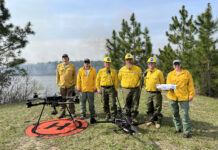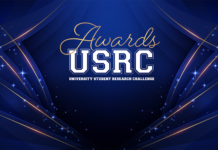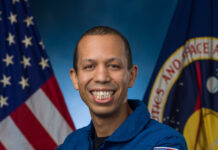NASA History News & Notes: Spring 2025 Edition
The NASA History Office has released the Spring 2025 edition of its informative publication, NASA History News & Notes. This latest issue takes a reflective look at various transitional phases in NASA’s storied past and examines the enduring impact of its earlier programs. Among the topics covered are the 1967 astronaut class, pioneering efforts in airborne astronomy, the consolidation of NASA’s aircraft in the 1990s, observations of lightning from space, the origins of the National Advisory Committee for Aeronautics (NACA), and the versatile DC-8 airborne science laboratory, among others.
Celebrating Milestones: NACA, Apollo 13, and Hubble
As we step into 2025, NASA is set to commemorate several landmark anniversaries. March 3 marks 110 years since the founding of NACA, the precursor to NASA. This organization was crucial in advancing aerospace technology in the United States. On April 11, we’ll remember the 55th anniversary of the Apollo 13 mission, a testament to human ingenuity and problem-solving under pressure. Additionally, April 24 celebrates 35 years since the Hubble Space Telescope was launched, revolutionizing our understanding of the universe. These milestones offer a chance for both the agency and the public to reflect on past achievements and anticipate future possibilities.
The Evolution of Astronaut Selection
Since NASA introduced its first group of astronauts, known as the Mercury 7, in 1959, the connection between spaceflight and piloting has been strong. At that time, being an astronaut required certification as a jet pilot. Even astronauts with a scientific background, selected in the 1960s, underwent pilot training. Robert R. Gilruth, then director of the Manned Spacecraft Center, was insistent on this qualification. However, the experience of the 1967 class of scientist-astronauts prompted a reevaluation. Five of these individuals left NASA, frustrated by the emphasis on piloting over scientific training and a lack of spaceflight opportunities. This led NASA to reconsider its requirements, eventually allowing for a broader range of expertise in its astronaut corps.
Airborne Astronomy: A Unique Approach
The technique of airborne astronomy, where observations are made from aircraft, has played a pivotal role in astronomical research. This method was highlighted in June 2011 when the Stratospheric Observatory for Infrared Astronomy (SOFIA) captured Pluto’s occultation of a distant star. This observation followed a significant 1988 event by the Kuiper Airborne Observatory, which confirmed the presence of Pluto’s atmosphere. The success of these missions underscores the importance and legacy of airborne astronomy at NASA. The concept was explored soon after the invention of airplanes, showcasing the innovative spirit of scientific exploration.
NASA’s Organizational Overhaul in the 1990s
In January 1995, NASA Administrator Dan Goldin announced a comprehensive restructuring of the agency. This ambitious project aimed to streamline NASA’s processes, reallocate program responsibilities, and adjust staffing levels. One of the most debated changes was the proposal to transfer most of NASA’s research aircraft to the Dryden Flight Research Center, now known as Armstrong. This move was part of a broader effort to increase efficiency and adapt to the evolving needs of the agency.
Observing Lightning from Space
During his time aboard Skylab, astronaut Edward G. Gibson observed Earth’s lightning from orbit, providing valuable insights into this powerful natural phenomenon. NASA’s Severe Storms and Local Research Program, among others, found these observations instrumental in enhancing weather predictions. From the 1960s through the early 1980s, NASA conducted various Earth- and space-based experiments to study lightning on a regional scale. These efforts have significantly contributed to our understanding of storm dynamics and forecasting.
Planning Apollo 11’s Celebration
As the Apollo 11 mission approached, Manned Spacecraft Center Director Robert R. Gilruth enlisted Jack Kinzler to help plan the celebration of the first lunar landing. Kinzler, as chief of the Technical Services Division, was tasked with presenting ideas to commemorate this monumental achievement. The planning involved collaboration between MSC and NASA Headquarters, highlighting the importance of celebrating human space exploration milestones.
The Founding of NACA: A Turning Point
March 3, 1915, marked the founding of NACA through an addition to a naval appropriations bill, with a modest budget of $5,000 annually. This date represents a significant turning point for science and aeronautics in the United States. NACA’s establishment was both a culmination of prior efforts and the beginning of a new era in aviation research, eventually leading to the creation of NASA.
The Legacy of the DC-8 Airborne Science Laboratory
In October 2024, the NASA History Office and NASA Earth Science Division hosted a workshop at the Mary W. Jackson NASA Headquarters Building to honor the legacy of the DC-8 Airborne Science Laboratory. This celebrated aircraft served from 1986 to 2024, facilitating numerous scientific, engineering, and educational endeavors. The workshop aimed to document the aircraft’s contributions and capture valuable lessons for future operators.
NASA’s history is rich with stories of innovation, adaptation, and exploration. This Spring 2025 edition of NASA History News & Notes provides a window into the agency’s past, offering insights that inspire future endeavors. For those interested in delving deeper into these topics, the full publication is available through NASA’s website.
For more Information, Refer to this article.


















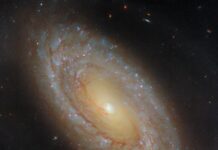

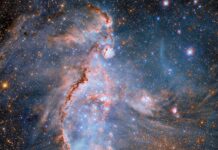

![Samsung’s Innovation Sparks Progress in Science and Industry: Quantum Dots How Samsung’s Engineering Feat Became a Catalyst for Scientific and Industry Advancement [Interview on Real Quantum Dots Part 2.]](https://www.hawkdive.com/media/samsung-tvs-and-displays-samsung-quantum-dots-technology-qled-tvs-quantum-dots-experts-interview-par-218x150.jpeg)








